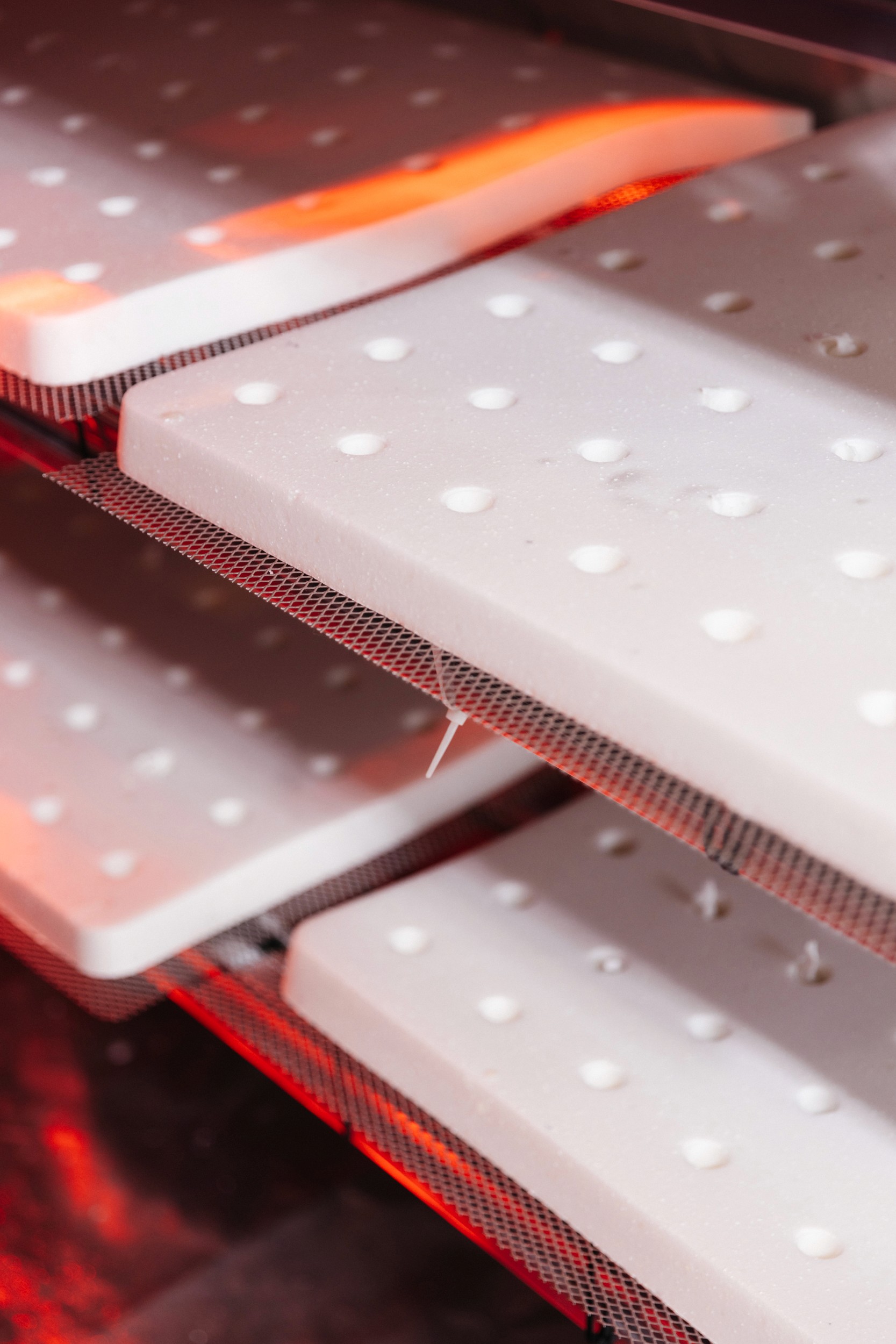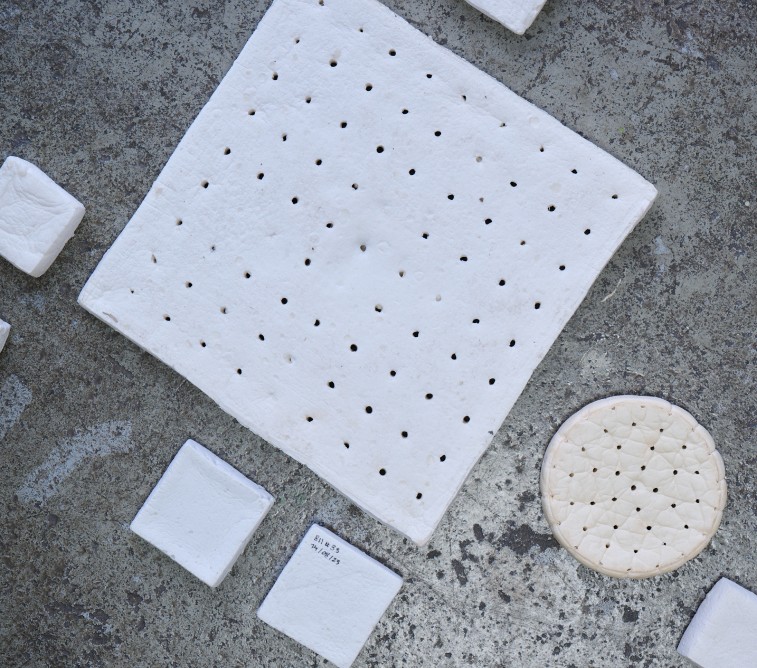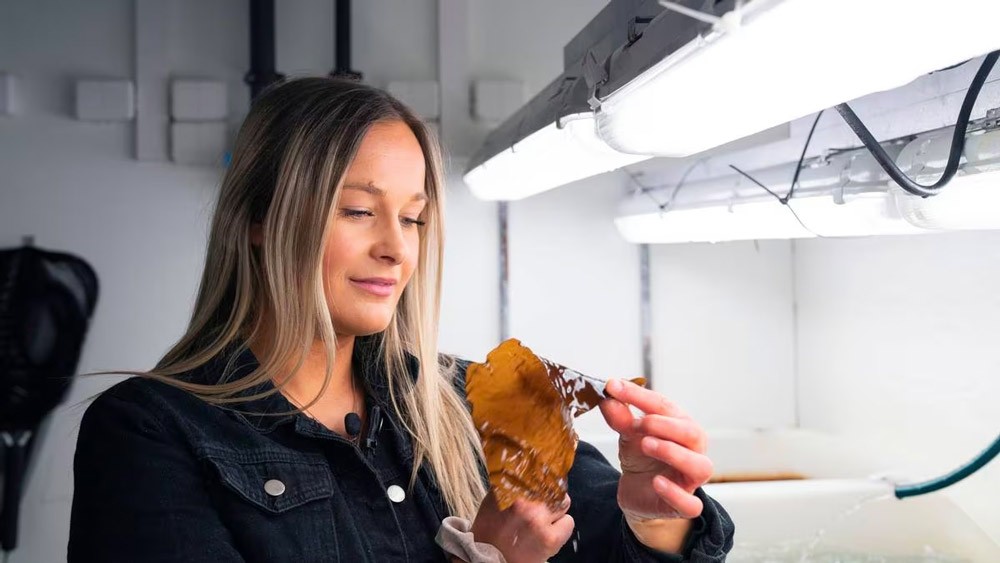We make foam from seaweed
We make foam from seaweed
Our foam is made from seaweed and other natural materials. No fossil fuels, no shortcuts.
We started with one simple idea: if we want better products, we need better ingredients.
Our foam is made from seaweed and other natural materials. No fossil fuels, no shortcuts.
We started with one simple idea: if we want better products, we need better ingredients.
Re-imagining everyday products with sustainable foam
Introducing sustainable seaweed foam that sets a new standard in planet friendly materials. Developed and crafted to make choosing planetary health a no-brainer.
We are on a mission to develop a sustainable alternative to oil-based foam.
We are on a mission to develop a sustainable alternative to oil-based foam.
Our ambition is to enhance sustainability in everyday products, beginning with the furniture industry. Our solutions not only reduce environmental impact but also provide cost-effective alternatives for businesses across various sectors.
Our ambition is to enhance sustainability in everyday products, beginning with the furniture industry. Our solutions not only reduce environmental impact but also provide cost-effective alternatives for businesses across various sectors.
So clean that you could eat it
So clean that you could eat it
So clean that you could eat it
(We still have to advise against it, says the lawyers)
(We still have to advise against it, says the lawyers)
(We still have to advise against it, says the lawyers)
100% free of petrochemicals
We don’t use fossil fuels. Simple as that.
Our foam is made from seaweed and other renewable ingredients because we believe materials should work with nature, not against it.
We don’t use fossil fuels. Simple as that. Our foam is made from seaweed and other renewable ingredients because we believe materials should work with nature, not against it.
100% free of petrochemicals
We don’t use fossil fuels. Simple as that. Our foam is made from seaweed and other renewable ingredients because we believe materials should work with nature, not against it.
100% compostable
Our foam breaks down in industrial compost in just over two months, faster than paper, and without leaving a trace. No toxins, no nonsense, just nature doing its thing.
100% compostable
Our foam breaks down in industrial compost in just over two months, faster than paper, and without leaving a trace. No toxins, no nonsense, just nature doing its thing.
Minimal carbon footprint
Made from plants, not petroleum. No new carbon added, just borrowing what nature already put in the loop. Produce by green energy and local materials to keep the footprint small.
Minimal carbon footprint
Made from plants, not petroleum. No new carbon added, just borrowing what nature already put in the loop. Produce by green energy and local materials to keep the footprint small.
Did you know?
Did you know?
Furniture foam accounts for 105 million tonnes of CO2
Globally, furniture foam, which is derived from petroleum, accounts for 105 million tonnes of CO2 emissions annually. One armchair for example, emits an average of 43 kg CO2, almost half of which is due to furniture foam.










More than a green alternative
We didn’t just want to make a cleaner material, we wanted to make one that actually works.
That’s why we’ve tested our seaweed foam for fire safety, long-term durability, and compostability. It holds up. It holds shape. And when its job is done, it breaks down without leaving a mess.
Turns out seaweed can handle more than you'd think and we're just getting started.
We didn’t just want to make a cleaner material, we wanted to make one that actually works.
That’s why we’ve tested our seaweed foam for fire safety, long-term durability, and compostability. It holds up. It holds shape. And when its job is done, it breaks down without leaving a mess.
Our Story
We’ve always loved making things. Shaping raw materials into something useful. But the more we learned about how things are made, the harder it became to ignore the cost it often has on the planet.
Agoprene started as a simple question: could we make foam without using fossil fuels at all? We began experimenting with seaweed in a student kitchen in Norway, not really knowing where it would lead.
What we ended up with is a new kind of foam made from natural ingredients. It’s still evolving. But for us, this is what innovation should look like: practical, collaborative, and a little bit messy.


Latest news
Partners & collaboration
We know we can’t do this alone. Real change happens through partnerships, where good ideas grow and people and planet both win.

















